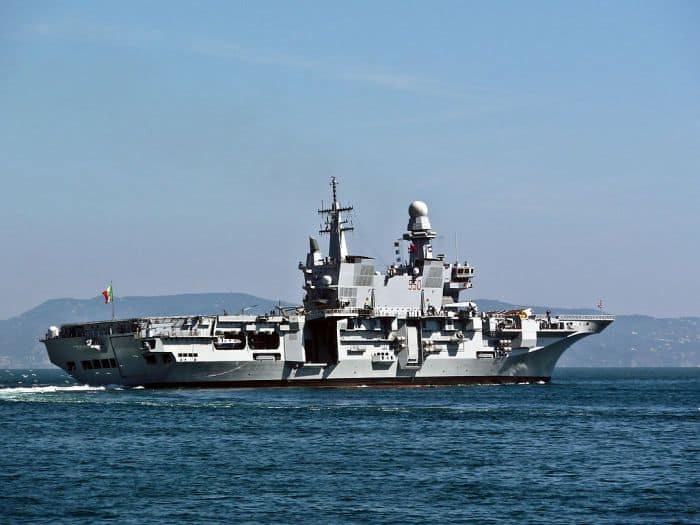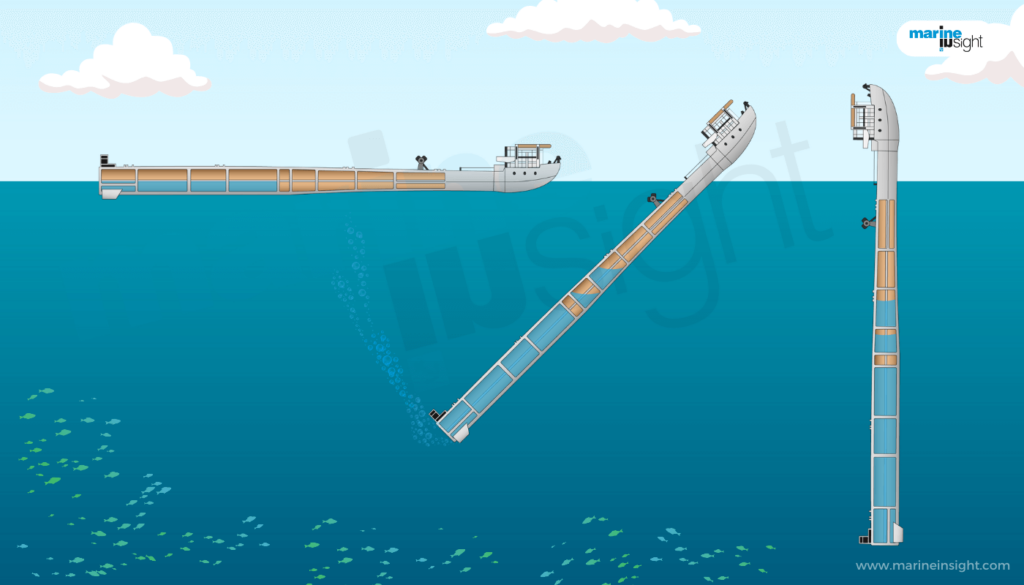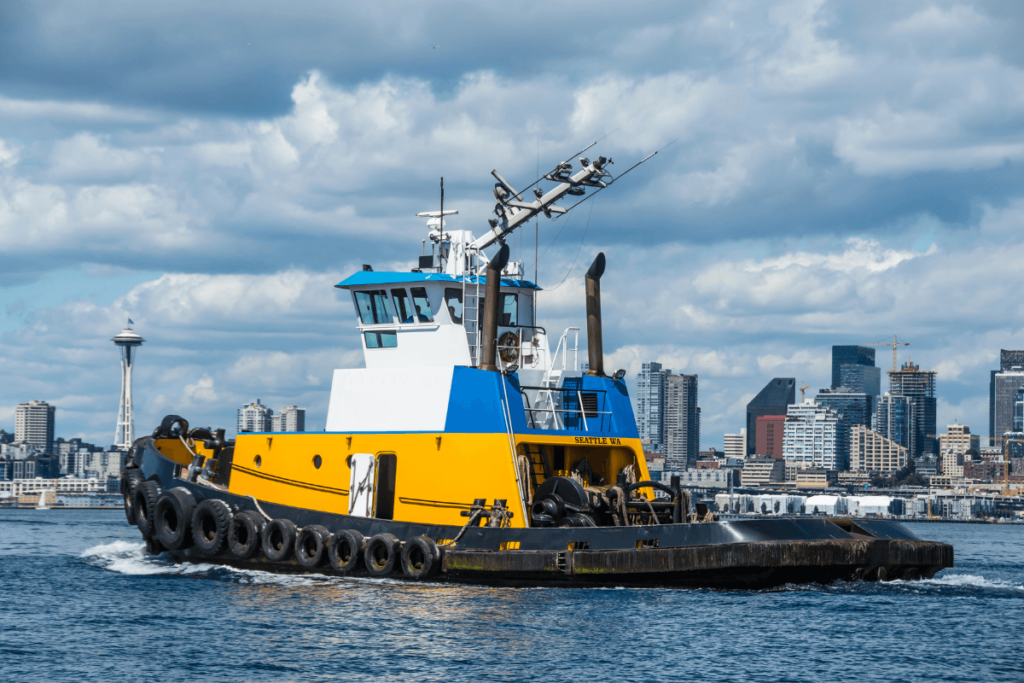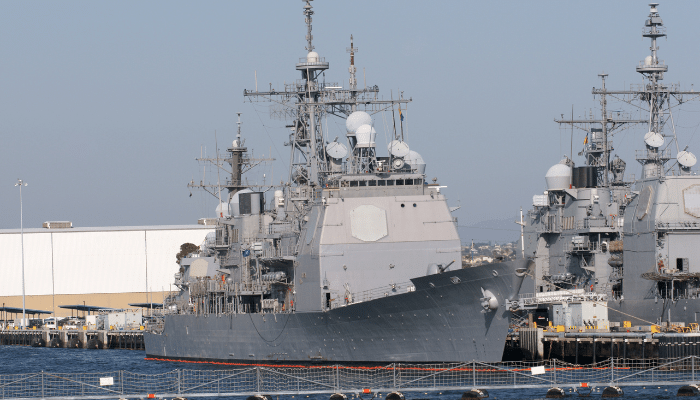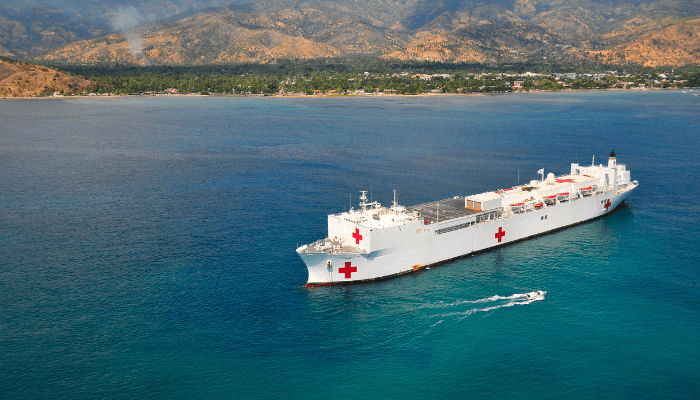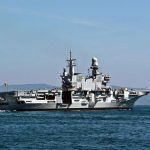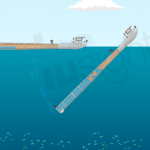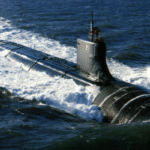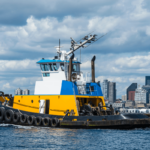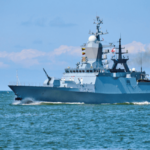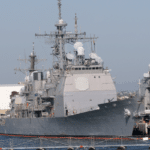Frigates vs Corvettes: What are the Differences?
In every naval fleet worldwide, regardless of its size and firepower, each warship assumes specific roles on the battlefront. Frigates and corvettes, smaller yet significant battleships, are commonly deployed by navies globally, underscoring the intricate balance of specialised vessels within maritime forces.
Their unique design features and assigned roles set them apart on the battlefront, each carrying out diverse functions within their capacity. As integral components of modern naval fleets, these warships play crucial roles in ensuring maritime security, projecting power, and safeguarding strategic interests. Appreciating the importance of these vessels, both in their similarities and differences, is essential for grasping the nuanced strategies employed by naval forces.

Origin and history
The term frigate has a varied history, initially associated with 16th-century Spanish galleys, 17th-century Dunkirk privateers, and Dutch Navy warships with fewer than 40 guns. It wasn’t until the Seven Years’ War that it became linked to a smaller class of vessels with significant firepower.
In the course of World War II, Great Britain designated small escort ships as frigates to protect convoys from submarine threats. In contrast, it took three decades for the U.S. Navy to adopt the term frigate for a larger escort ship than a destroyer, only to align its usage with most other navies later in 1975. Presently, frigate serves as the universal term for smaller warships across all navies, encompassing capabilities such as antisubmarine, anti-aircraft, aircraft-direction, or general-purpose roles.
During the Age of Sail, corvettes were one of many types of warships with a single deck of guns and were very closely related to sloops of war. The French Navy first introduced the term in the 1670s, and over subsequent decades, corvettes grew in size to become vessels that could house twenty guns.
In the early years of the U.S. Navy, corvettes were referred to as ship sloops, while the British Navy adopted the term in the 1830s to describe a slightly larger small sixth-rate vessel than a sloop. As steam power took precedence in the mid-19th century, corvettes faded from the forefront of battle, with some being repurposed to support gunboats during colonial missions. However, during World War II, corvettes experienced a resurgence as small antisubmarine vessels escorting convoys in the Atlantic, eventually evolving into modern surface warships.
Design features
While the classic sailing frigates, renowned for their roles in the Napoleonic Wars, were characterised by square rigging, modern frigates have evolved to become larger in size and incorporate sophisticated design features.
A notable example is the German Navy’s Baden-Württemberg-class frigate, which currently holds the title of the world’s largest frigate. This formidable vessel boasts a stealthy design for both hull and superstructure, measuring an overall length of 149.6m, a beam of 18.8m, and a displacement of 7,200t. Another prominent contender in the realm of powerful frigates is the Russian Navy’s Admiral Gorshkov-class. With an overall length of 130m, a beam of 16m, and a draft of 16m, these frigates exhibit substantial size and capability. Operating with an impressive range of more than 4,000 miles and a displacement of 4,500t, they make a formidable presence on the open waters.

Corvettes, a naval class positioned below frigates, represent a sizeable category that surpasses patrol boats in dimensions. Engineered with aerodynamic hull designs for enhanced speed, contemporary corvettes typically displace between 500 and 2000 tons. Among the latest additions to this class, the Köln, slated for commissioning in 2025, is the sixth ship of the Braunschweig-class corvette in the German Navy. Boasting dimensions of 89.12 meters in length, 3.28 meters in beam, and a draft of 3.4 meters, the Köln exhibits a displacement of 1,840 tonnes.
Role as a warship
Originally, Frigates served as scouts for the fleet, engaging in commerce-raiding missions, patrols, and the conveyance of messages and dignitaries. However, the evolution of these warships has led to a transformation in their roles. Modern Frigates now undertake patrol missions, safeguarding not only other fleet vessels but also merchant marine ships and amphibious expeditionary forces.
The advent of Guided Missile Frigates and Antisubmarine Warfare Frigates has heightened the significance of these warships on the battlefield. Modern frigates now play a more expansive role, actively engaging in various tasks, notably participating in antisubmarine warfare (ASW) operations.
Corvettes play a pivotal role in contemporary naval engagements, showcasing their versatility and high effectiveness, particularly in Intelligence, Surveillance, and Reconnaissance (ISR) missions. Beyond their essential role as preparatory vessels in critical wartime scenarios, corvettes excel in a myriad of tasks.
They contribute significantly to escort missions, ensuring the protection of vital assets, engaging in coastal patrolling to secure littoral regions, and actively participating in humanitarian assistance and disaster relief efforts. Corvettes also prove their worth in minor conflicts, demonstrating agility and adaptability, and they are instrumental in “show-the-flag” missions, projecting naval presence and diplomacy in strategic regions.
Weaponry
Given their increasing significance on the battlefield, frigates assert their dominance through a varied arsenal tailored to their specific roles. This weaponry encompasses advanced defence systems featuring anti-ship and anti-aircraft missiles, naval guns, and torpedoes. Some frigates are additionally equipped with Close-In Weapon Systems (CIWS), antisubmarine warfare (ASW) capabilities, and Electronic Warfare (E.W.) Systems, enhancing their adaptability and survivability in modern battlefields.
For instance, the Spartaco Schergat, the newest FREMM multipurpose frigate under construction for the Italian Navy, showcases an impressive array of weaponry, including cutting-edge ASW features such as the Thales 4110CL bow-mounted sonar and the Thales 4249 (CAPTAS 4) suite for submarine detection, along with an advanced Integrated Electronic Warfare Suite (IEWS).

Based on their designated roles, modern Corvettes are armed with advanced naval weaponry, encompassing medium- and small-calibre guns, antisubmarine armaments, and both surface-to-surface and surface-to-air missiles.
Furthermore, certain vessels have the capability to house a small or medium antisubmarine warfare helicopter. For instance, the French Navy’s Gowind Class Corvette boasts a weaponry suite including anti-ship missiles, water cannons, ship self-defence systems, 12.7mm machine guns, a 20mm machine gun, a 76mm naval gun, and an electronic warfare suite.
Electronic Warfare and Sensors
Frigates contribute significantly to the fleet’s battlefield capabilities by incorporating advanced technological attributes. These modern vessels include sophisticated sensor systems such as radars, cutting-edge communication systems, integrated command and control systems, and advanced navigation systems. An example of this technological advancement is evident in the upcoming Constellation-class multi-mission guided-missile frigate of the U.S. Navy.
This vessel is set to feature several state-of-the-art components, including a baseline 10 Aegis combat management system, Raytheon’s AN/SPY-6(V)3 radar, and an Enterprise Air Surveillance Radar (EASR). Additionally, the frigates will be equipped with a lightweight towed array sonar, an antisubmarine warfare combat system, and a variable-depth sonar (VDS), among others.
Electronic warfare and sensors are pivotal elements in the operational framework of corvettes, augmenting their situational awareness, self-defence capabilities, and overall mission effectiveness.
This sophisticated technological integration encompasses an advanced communication system, precise GPS and inertial navigation systems, decoy systems, state-of-the-art radars and sensors, and electronic counter and support measures.
The upcoming fifth Navantia Avante 2200 corvette of Royal Saudi Naval Forces, slated for delivery in 2024, showcases an armament suite featuring the Leonardo Super Rapid 76mm machine gun system, four 12.7mm machine guns, a 30mm machine gun, surface-to-air and surface-to-surface missiles, torpedoes, and decoy launchers.
Stealth features
The incorporation of stealth technology ensures a minimal radar cross-section, enhancing survivability and mission success for naval vessels. Frigates assigned roles encompassing antisubmarine warfare, anti-air warfare, maritime patrol, surveillance, and escort missions benefit from advanced stealth technology.
Their capabilities are enhanced through the incorporation of sophisticated features, including the reduction of radar cross-section, management of emissions and signatures, minimisation of infrared and thermal signatures, and the reduction of acoustic signatures. These attributes collectively contribute to the frigates’ effectiveness and survivability in contemporary naval warfare scenarios.

In addition to their advanced weaponry, corvettes are equipped with cutting-edge stealth features, a crucial element ensuring operational effectiveness in contested maritime environments.
A prime illustration of this capability is found in the Russian Navy’s Steregushchy Class corvettes, where a meticulously crafted stealth design is employed to minimise radar, acoustic, infrared, and magnetic signatures. This strategic integration of stealth technology significantly diminishes the vessel’s radar signature while concurrently reducing acoustic, infrared, magnetic, and visual signatures, exemplifying the comprehensive approach to stealth in the construction of these warships.
Speed and manoeuvrability
Having showcased their ability to cruise at 20 knots during World War II, frigates have come a long way and achieved greater capabilities in modern times. Powered by advanced propulsion systems, modern frigates can attain higher speeds and manoeuvrability, contingent on the vessel’s type and purpose.
The Indian Navy’s Shivalik-class multi-role stealth frigates are capable of reaching a maximum speed of 32 knots. The trio of operational Shivalik class frigates attains this speed through the combined power of two Pielstick 16 PA6 STC Diesel engines and two GE LM2500+ boost turbines, generating a total of 47,370 hp (35,320 kW).
Characterised by their smaller size and agile design, corvettes are generally more manoeuvrable than frigates, although their speed is subject to various factors. A notable example of high-speed corvettes is the Royal Norwegian Navy’s Skjold class. These naval corvettes, measuring 47.5 meters in length, are propelled by four gas turbines, enabling them to achieve speeds of up to 60 knots in calm seas. The Skjold class stands out as one of the fastest vessels in its category, showcasing the agility and swiftness associated with modern corvette designs.
Crew and operation
The crew size needed to operate a frigate or corvette can vary depending on the specific class, design, intended mission, and capabilities of the vessel. Factors influencing the crew size of a frigate include the complexity of its systems, the diversity of missions it can undertake, and the extent of automation integrated into its design.
Modern frigates, in contrast to their traditional counterparts, often feature increased automation, resulting in a reduced crew requirement. In typical situations, the crew for a modern frigate may range from approximately 120 to 200 personnel, facilitating effective operation on the battlefront.

Similar to frigates, the crew size necessary for operating a corvette varies depending on its design and specific operational requirements. The Adhafer-class corvette, currently one of the largest in operation within the Algerian Navy at 120 meters in length, typically demands a crew of 120 personnel for its operation. Constructed by the China State Shipbuilding Corporation, this impressive vessel boasts a width of 14.4 meters, a draft of 3.87 meters, and a fully loaded displacement of around 2,880 tons.
Cost and maintenance
Positioned above corvettes in terms of size, technology, and role, frigates demand higher investments for both construction and maintenance. The Sachsen-class frigates of the German Navy, with the last vessel commissioned in 2006, are regarded as among the most expensive in their category, with a total cost of U.S. $2.37 billion for three vessels. At the same, the recently commissioned first Mogami-class frigate by the Japan Maritime Self-Defense Force (JMSDF) is projected to have incurred an estimated cost of JPY50 billion ($452.7 million).
Similarly, corvettes also necessitate substantial investments due to their intricate design, advanced technology, and weaponry features, generally costing less than frigates. An illustrative example is the INS Kavaratti, an antisubmarine warfare corvette commissioned by the Indian Navy in 2020. This vessel is one of four Kamorta-class corvettes constructed under Project 28 (Kamorta class), incurring a total cost of $263 million.
Fleet Size
Naval powers around the globe have consistently included frigates in their arsenals to safeguard the safety and security of their borders. The most recent Global Firepower Index reveals that China leads in frigate fleet size with an impressive count of 43 vessels, closely followed by its neighbour Taiwan, which maintains a fleet of 22 frigates.
Securing the third and fourth positions are South Korea and Turkey, boasting 18 and 16 frigates, respectively, in the rankings. It’s important to note that this list excludes vessels currently under construction, such as the U.S. Navy’s Constellation-class multi-mission guided-missile frigate.

On the other hand, corvettes are not universally considered an integral component of naval fleets worldwide. Nevertheless, there is a notable presence of corvettes globally. According to the Global Firepower Index, Russia stands at the forefront with the possession of 86 corvettes in its surface fleet.
Following closely are the navies of China and the United States, with 72 and 22 corvettes, respectively, securing the second and third positions. Indonesia and India occupy the fourth and fifth positions, showcasing 21 and 19 corvettes, respectively.
You might also like to read-
- INS Satpura: The Indigenous Shivalik Class Stealth Frigate of Indian Navy
- What are Corvettes Naval Vessels?
- What are Stealth Ships?
- 10 Largest Hospital Ships In The World
- Top 10 Biggest LPG Carriers in The World
Disclaimer: The authors’ views expressed in this article do not necessarily reflect the views of Marine Insight. Data and charts, if used, in the article have been sourced from available information and have not been authenticated by any statutory authority. The author and Marine Insight do not claim it to be accurate nor accept any responsibility for the same. The views constitute only the opinions and do not constitute any guidelines or recommendations on any course of action to be followed by the reader.
The article or images cannot be reproduced, copied, shared, or used in any form without the permission of the author and Marine Insight.
Do you have info to share with us ? Suggest a correction
Latest Type Of Ships Articles You Would Like:
Subscribe To Our Newsletters
By subscribing, you agree to our Privacy Policy and may receive occasional deal communications; you can unsubscribe anytime.



